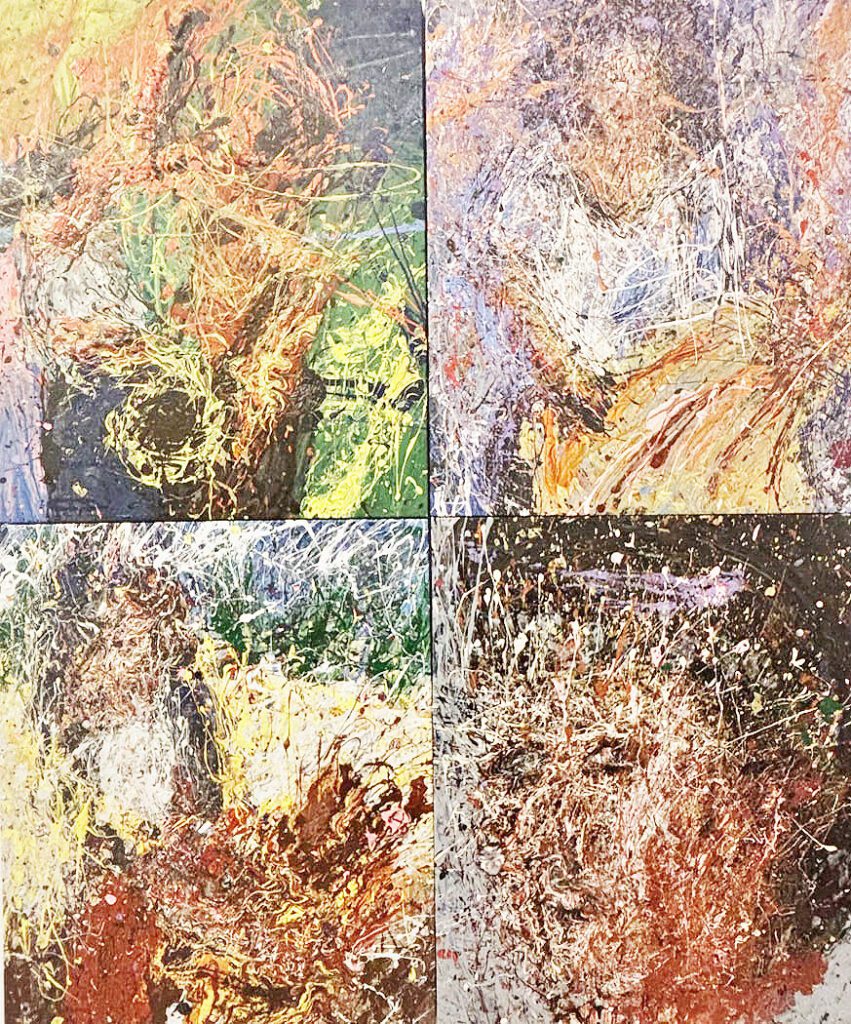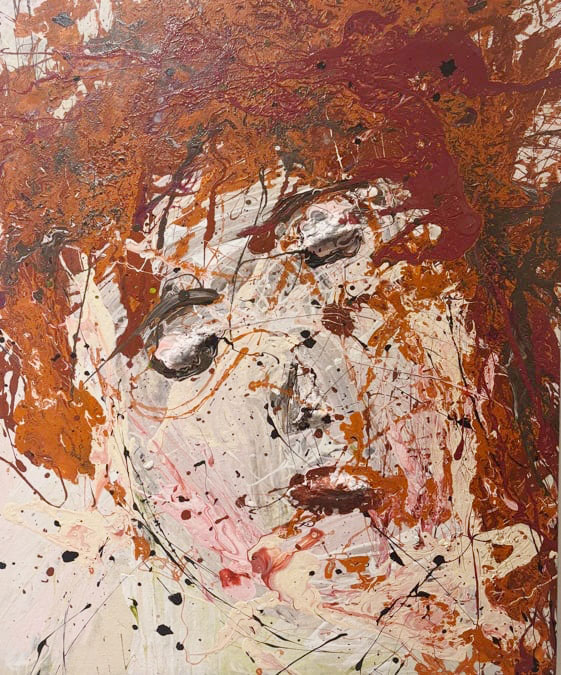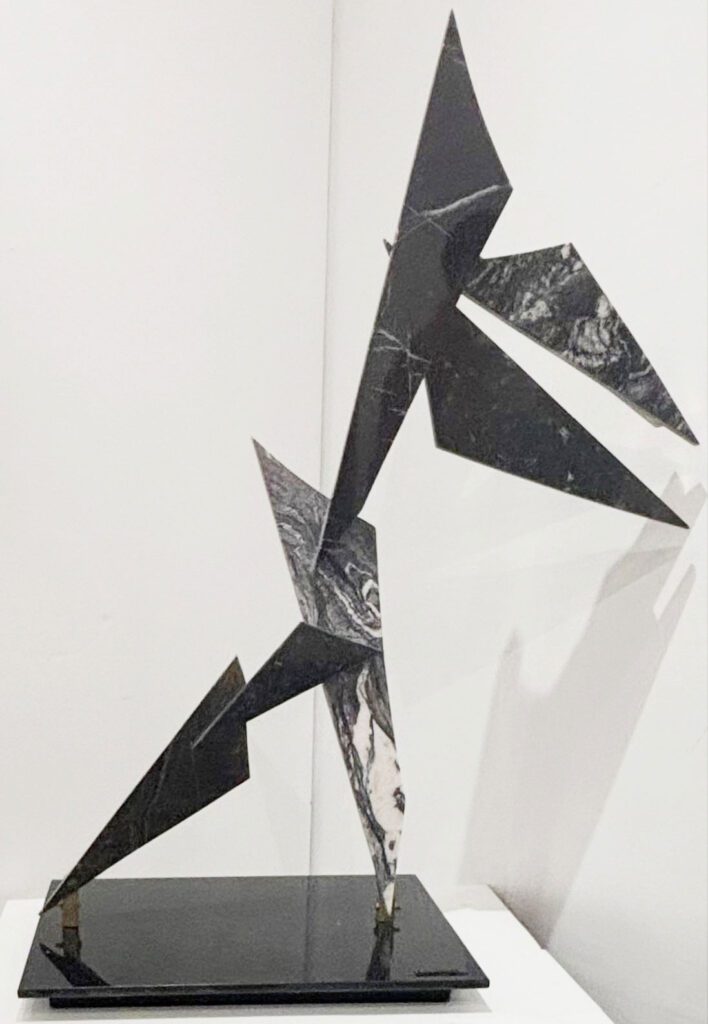David Kaufman begins with movement: a poured wash, the drag of a brush, the pressure of a hand. His Naked Distortion series grows from these initial marks. Faces emerge in fragments, hovering between appearance and disappearance. “I follow what the canvas gives,” he says.
This way of working grew out of years of adapting to different creative roles and environments. Kaufman began in 3D animation, where he learned to think in rhythm, structure, and space. He later established a stoneworks company that produces sculptural, interior, and architectural surfaces. He continues to run the business while creating paintings and installations. “Stone taught me to work with resistance. It doesn’t always cooperate, and that changes how you approach each decision.”
He describes this approach as aligned with a brutalist sensibility. “There’s art in how you work with what’s heavy, imperfect, and permanent.”
Dividing his time between Manila and Madrid, Kaufman draws from both environments. “Madrid gives me distance from everyday logistics. Manila roots me. Both shape what ends up in the work.”
His creative foundation formed early. His mother designed accessories, and his father restored vintage cars. “Watching my parents make things taught me that trial and error was part of the process, not something to avoid.”

Yellow Green, and Gray Brown


His early paintings explored mixed media—oil, acrylic, and texture—driven by curiosity. “I was always interested in the relationship between surface and story. My surroundings informed what I painted.”
He continues to build on that method, often layering new marks over older work. “I don’t throw things out. I keep working until it becomes something else.”
Architecture plays a central role in his visual thinking. Shapes hold weight. Composition depends on balance. What might look abstract often draws from memory and built form. “I think a lot in terms of tension, how the parts hold together without being neat.”
Kaufman cites Jackson Pollock and Jean Dubuffet as important influences. Their approaches to material and context inform his own. Dubuffet’s ideas also echo through Brut Collective, which Kaufman co-founded with Ron Lopez Davis and Reb Belleza.
“Working alongside other artists sharpens your focus. Even when no one says anything, you learn just by being around the work.”
He is currently establishing a shared studio grounded in that principle. “I want a space where things unfold at their own pace. Some of the most important shifts happen simply by being present with others making things.” He is currently showing in Exhibit Two with Brut Collective at J Studio, following his recent exhibition Coexist with Milo and Patrick Naval at Artist Space.
Filipino culture and architecture remain central to Kaufman’s work. “Even when I paint abroad, I return to Filipino subjects such as structures, rhythms, and patterns. It’s not always direct, but it’s always there.”
“My process has changed over the years,” Kaufman says. “But the need to create has always been constant. That’s the one thread that never left.”






